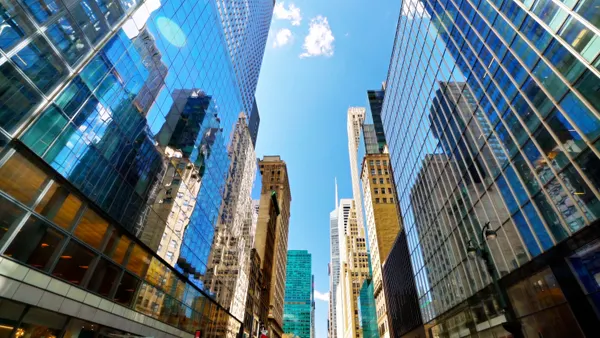Dive Brief:
- Madison, Wisconsin, has approved a “Complete Green Streets” policy. The design approach aims to help lower pollution and align with and support the city’s safety and mobility goals, which include getting to zero deaths on city streets.
- Mayor Satya Rhodes-Conway said in a statement Thursday that many elements of the program, including pedestrian and bicycle safety and improving urban tree canopy, have already been important parts of street design in Madison. Now, the concepts are codified and organized in a guide that’s a “flexible tool that can evolve” as the city does.
- “With significant growth and development, rising concerns about safety, and increased awareness of disparities, Madison needed a more detailed approach to designing streets that reflects our community’s values and priorities,” the guide states.
Dive Insight:
The complete streets approach — designing for safety and accessibility across different modes of transportation — has gained traction at the local, state and national levels. Madison had a resolution committing to complete streets in 2009, but the new policy emphasizes incorporating city sustainability priorities, too. The city is working toward achieving net-zero communitywide carbon emissions by 2050.
The guide notes that Madison’s streets are its largest public spaces with impacts on businesses, commuters and natural resources. “Should valuable street space go toward parking or bike lanes? Bus lanes or street trees? Rain gardens or sidewalks with café dining? The answer varies in different situations, but how do we make those decisions? The conventional approach to street design did not help us answer these questions,” it states.
After conducting public outreach, the city identified four main street values to consider going forward:
- Putting people first, which prioritizes safety, comfort and well-being, while deemphasizing speed and convenience.
- Supporting community, which entails creating safe and welcoming places, while emphasizing short trips and access to local destinations.
- Fostering sustainability, which involves promoting walking, biking and transit, while using streets to expand urban tree canopy and clean stormwater.
- Centering equity, which means engaging inclusively, providing access to opportunities, prioritizing and supporting the needs of historically underserved people.
The city’s common council unanimously supported the policy. Following its adoption, the city’s transportation director said on LinkedIn the policy that was years in the making “focuses on moving people,” in contrast to historical policies focused more on cars.











